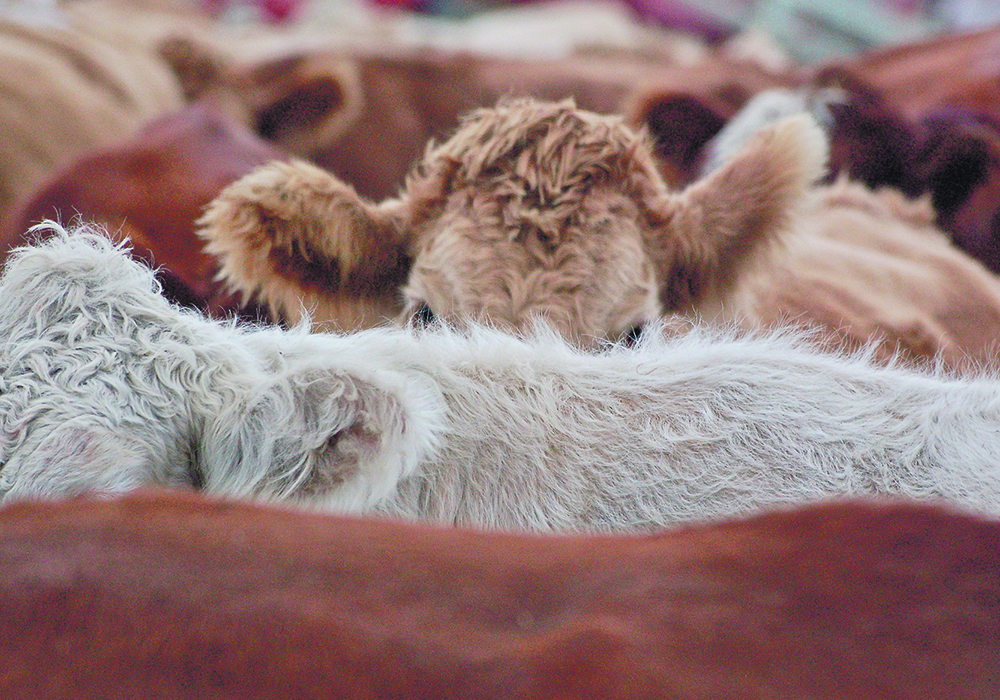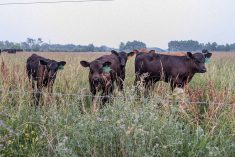High feed costs and the divide between retail prices and producer returns are challenges, but demand remains strong
Canfax analyst Brian Perillat said there is reason for optimism in the cattle market, even if producers don’t think so.
Speaking to the virtual Saskatchewan Beef Industry Conference Jan. 20, he said he understands producers’ frustration over prices.
“Alberta fed cattle prices were actually the second-highest on record last year, but it sure doesn’t feel like it,” he said.
High feed costs are biting into prices and the divide between retail meat costs and returns to producers are challenges.
But the demand that has existed throughout the COVID-19 pandemic continues domestically and internationally, Perillat said, and that’s good for the beef industry as a whole.
Read Also

U.S. farm group supports supply management
U.S. grassroots farm advocacy group pushing new agriculture legislation that would move towards supply management like Canada has for dairy industry
Wholesale cut-out prices in the United States are climbing in the midst of record beef production, he said. Canadian boxed beef prices weren’t available but show a similar trend.
“It’s unbelievable how strong wholesale cut-out prices are and continue to be,” Perillat said.
Sitting at around $300 per hundredweight for choice, alongside record production, the cut-out values indicate industry strength.
Producers aren’t seeing those dollars, however.
“The frustration is real and warranted,” he said.
Global protein supply is declining and Perillat expects another pullback in 2022 due to extremely high grain prices.
“Any time we see a run-up in grain prices, it usually does pinch meat supplies a little bit, or at least slow the growth,” he said. “Now we’re looking at possibly tighter meat supplies, continued strong demand, that bodes well for meat prices moving forward.”
U.S. production is likely to be record high in 2021. After hitting a peak in herd numbers in 2019, there have been three years of smaller calf crops, but there are large numbers of cattle on feed.
Price optimism is reflected in higher futures.
Canadian cattle-on-feed numbers are 10 percent higher than a year ago and there are a lot of cattle to work through the system in the next few months, Perillat said.
“But after that, last year they slaughtered about 400,000 more beef cows than two years ago in the United States, so they’re going to see a significant drop in the U.S. calf crop in 2022 (and fewer) heifers retained,” he said. “This is where it sets up that, hopefully, the cattle producers’ time will come.”
The Omicron variant of COVID-19 is causing more absenteeism in U.S. slaughter plants and creating a backlog. Perillat said the backlog is nothing like it was in 2020 when the pandemic first hit but is having an effect.
“In the U.S., we were anticipating them to be killing 670,000 head to start January and they’re barely getting through 620,000, maybe 630,000 this week,” he said.
Similarly, Canadian plants were processing about 4,000 head weekly instead of 4,500 and Perillat said that bears watching.
Imports from the United States that have helped western Canadian feedlots and packers keep moving supply to the market have slowed.
The Canadian herd hasn’t grown since 2014 and last year’s drought did not help. The expected massive cull did not materialize but there has been a small contraction, Perillat said.
He suggested the issue goes back to competition for land use. Mixed farms are largely gone and where cattle and grain farms used to complement each other they now function independently and compete for land.
The cow herd sits at about 3.5 million cows, down from 4.5 million before BSE.
Carcass weights continue to grow, with a record large 920 pounds even with record high grain prices in 2021.
Canadian exports have dropped from between 800,000 to 1.2 million head to about 600,000 head.
Production has grown through imports. Even though Canada is still a net exporter it became a net importer of about 250,000 feeders.
Perillat said that is a “head scratcher” with a feed cost disadvantage in Western Canada.
“Competition is going to be stiff for cattle feeders, which is good for cow-calf and the rancher but puts the pinch on the feedlot side of things,” he said.
Feeder exports picked up a bit in late 2021, which could mean tighter supply into this summer and fall.
Fed cattle prices haven’t kept up with the cost of production and packers are bidding on a wide range, Perillat said, because there are lots of cattle to process.
Basis, which was record strong in 2021 in Alberta, has now gone significantly to discount as the U.S. herd tightened.
Fat cattle were trading $20 per cwt. above the U.S., or about C$300 per head, above the U.S. market, but are now about $250 below, he said.
Break-even prices will be challenging, Perillat said, and a big price run-up for the spring market is needed.
Meanwhile, he said the Canadian dollar is something to watch. An exchange of 80 cents or less to the U.S. dollar is “quite comfortable for the cattle industry,” he said.
















